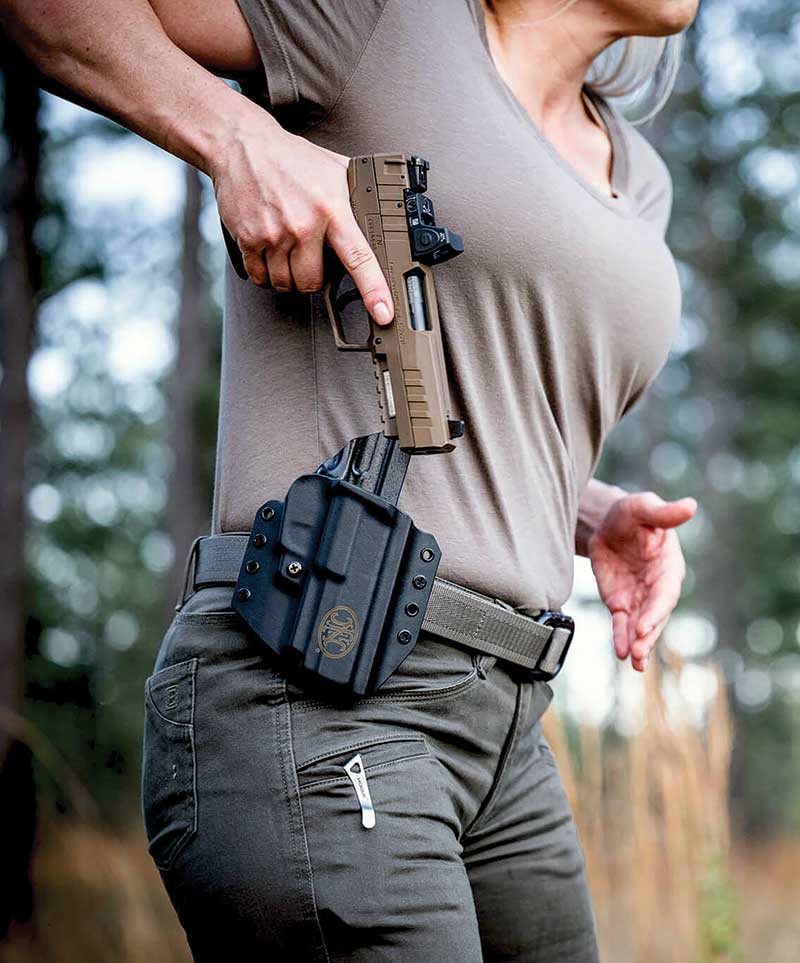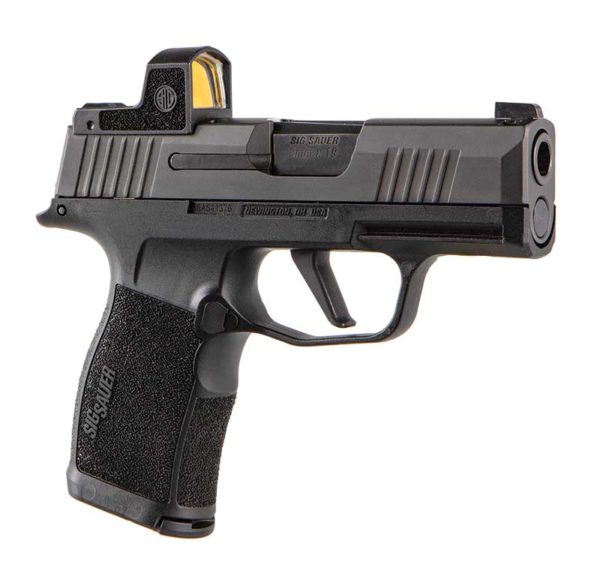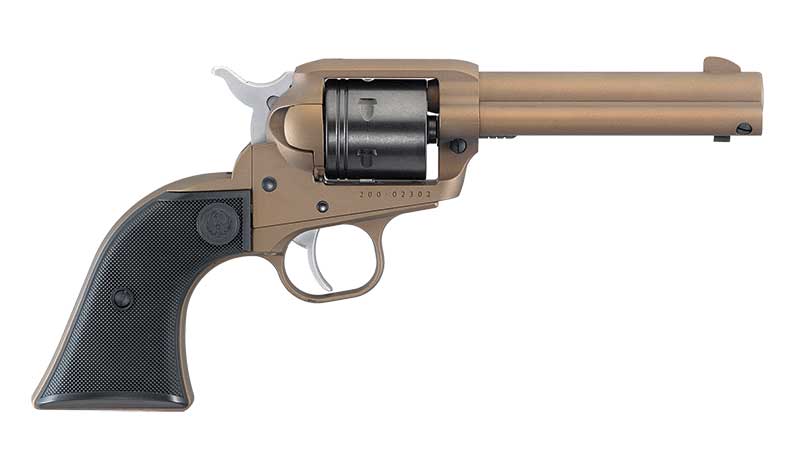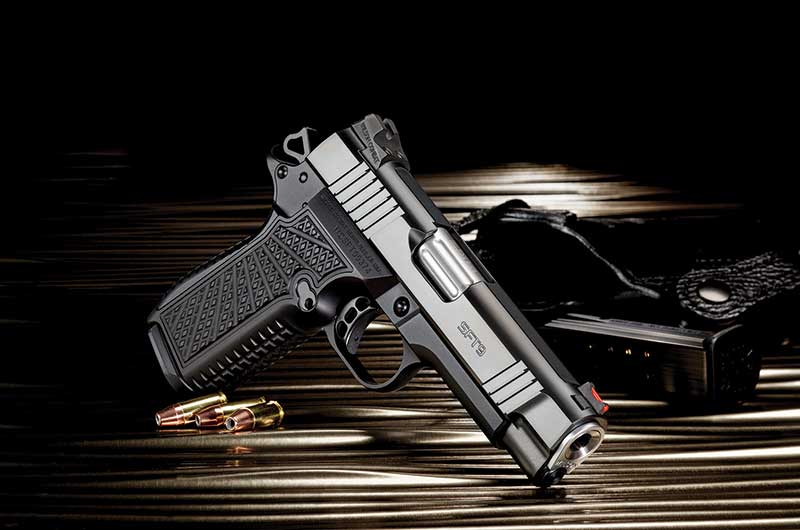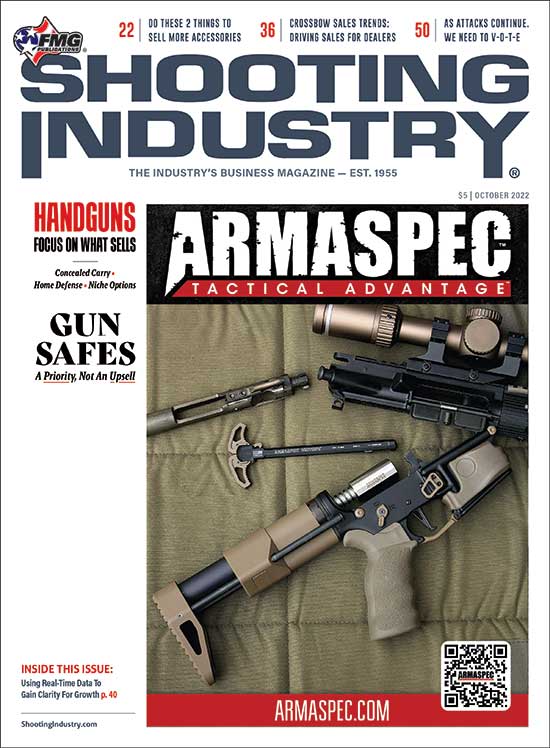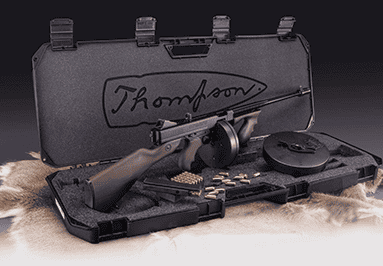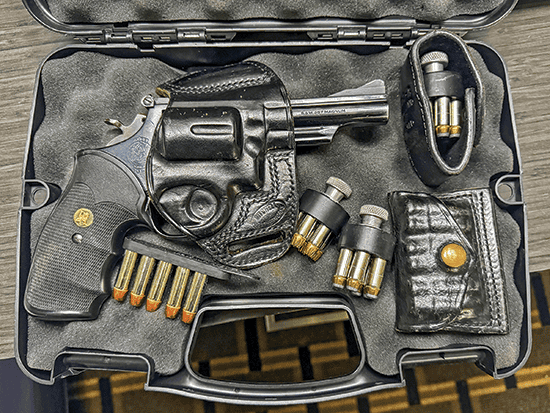Handguns
Focus On What Sells
It wasn’t too long ago optics-ready handguns were little more than a novelty. But today, it’s difficult to talk about the handgun segment without delving into the increasing number of guns coming from the manufacturers with optics already installed, or ready to accept one.
Mike Sfakianos, a senior manager at Bill Jackson’s in Pinellas Park, Fla., remembers customers coming into the store even three or four years ago and being skeptical about the utility of a red dot on a pistol.
“It was a slow start,” Sfakianos said. “People thought it was more of a competition-type thing.”
Like a lot of things in the firearms industry, change doesn’t happen overnight. GLOCK, for example, introduced its now-popular MOS models back in 2015, but it took a while for customers to warm to the idea of putting an optic on a gun for home defense or carry. But change has come.
“Now it seems like just about every manufacturer has gone to an optics-ready gun,” observed Sfakianos, noting customers are growing increasingly interested in carrying subcompacts (the SIG P365 and GLOCK 43X MOS, for example) with dots.
“ Concealed carry and home-defense guns tend to draw the bulk of the attention from handgun buyers, but not everything is destined for a carry holster or bedside drawer. ”
It’s a similar story at Inner 10 in Omaha, Neb., where store President Jacques Clerc said customers usually spend the extra money when offered a choice between an optics-ready gun or its standard counterpart. Even if they don’t walk out the door with an optic “it gives them that option later on down the road,” he noted.
The store caters to customers looking for carry guns, like the SIG P365, Springfield Armory Hellcat, Smith & Wesson Shields and various GLOCKs.
“We’re a small, specialized shop, so I don’t have the ability to carry every model. I focus on what sells,” Clerc added.
This niche also is proving popular with many of the newer shooters who bought their first guns in 2020 and 2021, observed Mark Hood, one of the owners of Red Hill Trading Post in Scottsville, Ky.
When those customers come back, they’re generally looking for something different, often for the range. A gun with a dot often fits the bill.
“We’re getting requests all the time and it’s reflected in my ordering now,” Hood stated.
Range Time, Fun Time
Of course, a gun doesn’t need a red dot for it to be fun to shoot. Concealed carry and home-defense guns tend to draw the bulk of the attention from handgun buyers, but not everything is destined for a carry holster or bedside drawer.
Smaller rimfire guns are increasingly popular, with buyers looking for a little nostalgia, a gentle way to introduce novices to shooting or something cheaper to feed.
Nebraska’s Inner 10 is doing brisk business in Ruger Wranglers and Heritage Rough Riders. Both offer an easy way to relive those childhood memories of playing with cowboy cap guns, Clerc said.
“It’s also a great option to take out to the range and not spend an arm and a leg on ammo. You still have the fun of having it go ‘bang’ and you get the entertainment of running a revolver and loading and unloading it,” he explained.
Another popular novelty is the LifeCard. Clerc originally bought the rimfire pistol, which folds into the shape of a credit card, for the rental wall as something fun for customers to play with. But then he put them in the sales cabinet.
“They walk out of the store left and right,” he shared.
Both Hood and Sfakianos have seen the same thing with Wranglers and Rough Riders. They’ve sold hundreds of the little revolvers. The affordable price makes them particularly attractive for customers who don’t have to spend much time justifying the purchase.
“You know with any of those $200–$250 revolvers, they just kind of buy them on impulse,” Hood said.
You Can’t Sell What You Don’t Have
Market conditions have improved substantially since the chaos of 2020, with inventory managers able to find enough popular guns to keep display shelves full. But it doesn’t mean all the choke points are gone. Some high demand guns are still hard to find. And in some instances, shortages of more exotic ammunition make it hard to justify stocking some guns.
It’s particularly challenging for smaller shops like Inner 10 in Nebraska, where they’re still waiting for their first SIG P322 — a gun customers keep asking about.
“I’m not a huge buyer, so with any of the super popular new guns that come out, it may take a year for me to get my hands on them,” Clerc said.
For Hood, the challenge is wheelguns — his customers have a strong appetite for Smith & Wesson, Colt and Ruger revolvers — and 1911s in the $600–$1,000 range.
“ For the average customer, it’s difficult to sell a gun if you don’t have ammo on the shelf for it.”
Jacques Clerc President, Inner 10
“I’m just having a terribly hard time getting them. I might get four or five and then not get any more for a month,” Hood explained.
At Bill Jackson’s in Florida, the wish list includes a pair of popular .22-caliber pistols — the SIG P322 and the FN 502.
“I wish I could get more of those quicker, but they’ve been trickling in,” Sfakianos shared.
Also frustrating is the ongoing shortage of ammo for less-popular calibers, including 10mm, .357 SIG and .44 Magnum — which can affect decisions on what guns to stock.
Sfakianos agrees. Before COVID hit, he recalls 10mm starting to pick up steam with the store’s customers. But the momentum has since died off.
“I think it would still be a good seller if we were able to get the ammo,” he suggested.
“You’ll find people who understand the market and they know they can go online and find ammo somewhere,” Clerc said. “But for the average customer, it’s difficult to sell a gun if you don’t have ammo on the shelf for it.”
Outside The Top Guns
Availability of handguns from the industry’s biggest names has improved substantially during the year, but not every customer wants a GLOCK, Ruger, Smith & Wesson, Springfield Armory or SIG SAUER. There’s room for other manufacturers for a variety of reasons, including cost and unique features.
At Inner 10, Canik (including the METE models) is growing in popularity along with Taurus (particularly the TX22 and G3c).
“They’re probably our highest volume guns,” Clerc said.
For Hood, in Kentucky, customers are interested in Canik, Rock Island Armory, Taurus and, more recently, Girsan.
“They’ve got a couple of reasonably priced 1911-style guns that are selling pretty good here,” he observed.
And at Bill Jackson’s, one of the top sellers is the Diamondback DBX57 – a “backpack-style” gun in FN 5.7x28mm that’s proven quite popular.
“I’m not a big Diamondback fan, but I’ve got to hand it to them, this design blew me away,” Sfakianos admitted. “You can get it into a tiny little sling pack. When people see that, it’s sold. I mean, literally that fast. I sell them like crazy.”
Getting The Word Out
Facebook and email marketing represent the bulk of Inner 10’s marketing efforts.
The social media platform is used to advertise events, classes and new products — often with videos or livestreams. It’s been particularly effective when the store gets guns, ammo or other items capable of generating traffic.
“People will come in specifically for that item, but hopefully my employees do their job and they walk out with more than what they came in for,” Clerc noted.
Email is used for a monthly newsletter and weekly updates on merchandise or anything else they want to promote, including openings in upcoming classes.
Hood, in Kentucky, has experimented with a wide range of platforms, including radio and newspaper ads, Twitter and Instagram. But Facebook has proven to be the best option. They’ll use it to post new guns, but are careful to never list prices.
At Bill Jackson’s, social media (Facebook and Instagram) has largely replaced traditional advertising methods — including TV, radio and billboards. The page keeps customers updated on new guns and ammo, such as what’s in stock, what’s on the way and any purchase limitations.
They also use it to advertise sales events, though they’ve been veering away from promoting “sales.”
“The word ‘sale’ isn’t really doing so much these days,” Sfakianos argued. “Everybody’s got stuff ‘on sale’ all the time.”
Instead, they’re moving toward events focused on particular manufacturers. For example, Bill Jackson’s recently had a Smith & Wesson Day, where company representatives brought in guns for customers to try. During the event, they also featured a variety of discounts and promotional items.
Sfakianos also offers a few words of advice on Facebook pages. First, keep in mind getting deep into the political weeds — particularly in the current environment — can hurt your page. Posting content that runs afoul of Facebook’s monitors can result in temporary, but sometimes lengthy, suspensions. With this in mind, Sfakianos handed over responsibility for the shop’s page to one employee.
“He’s careful. He knows how to word things so we don’t get banned,” Sfakianos stated. “It works out better this way, because if there are too many hands in the pot, it gets crazy and messy.”
Dealers, have your say: What handgun trends have you observed at your store? comments@shootingindustry.com

